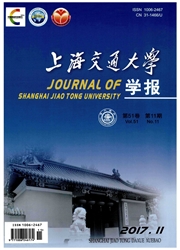

 中文摘要:
中文摘要:
分别采用含100、50和25个随机分布微孔洞体胞模型,对体胞内应力分布和孔洞长大规律进行统计分析,在此基础上讨论采用含25个随机分布微孔洞体胞模型作为宏观材料代表性单元(RVE)来研究材料损伤机制的合理性,并对变形过程中体胞内各微孔洞演化过程进行了研究.结果表明:由于体胞内微孔洞的随机分布,造成孔洞周围基体材料最大三轴应力参数增加,从而导致该孔洞的快速增长,并带动周围微孔洞快速增长,这种孔洞的快速长大链式反应导致在很短的时间材料内出现大量微孔洞,并聚合形成微裂纹,直至试样最后失效,该结果较清楚解释了韧性材料圆棒试样只在颈缩阶段才会产生大量的微孔洞的试验现象的原因.含随机分布多微孔洞体胞模型能够用于分析周期分布微孔洞体胞模型无法反映的体胞内微孔洞非均匀发展的过程,因此更适合于研究韧性材料的损伤破坏机制.
 英文摘要:
英文摘要:
The statistic characteristic of the stress distribution and the equivalent stress evolution were in vestigated for the cell models with 100, 50 and 25 random distribution voids. The rationality that the eel model with random dispersion voids was thought as the representative volume element (RVE) of the mac roscopic materials to describe the mechanical behaviors of ductile material was discussed. On the base o the results, of the voids the triaxialit f the evolution procedure for every void in the cell model was analyzed. The random dispersion led to the non-uniformed stress state for the matrix materials around the voids. The increase of y stress parameter of the matrix materials causes the sharply growth of the void. Then it will drive the adjacent voids to grow quickly. The chain response of the rapid growth leads to the formation of a great many of voids in the necking stage. As the growth and coalescence of voids happen continuously, the materials failed finally. The triaxiality stress parameter has important influence on the growth of the voids in the ductile materials. The cell model with random distribution voids can describe the non-uniformed evolution and fracture procedure of the ductile materials more than that with periodical distribution voids.
 同期刊论文项目
同期刊论文项目
 同项目期刊论文
同项目期刊论文
 期刊信息
期刊信息
